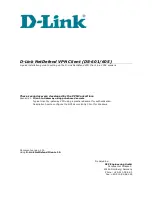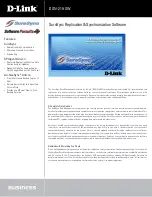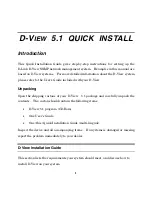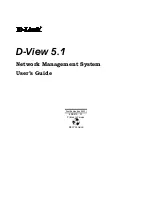
Chapter 12. Simulating production traffic
The RosettaNet Partner Simulator (RN PS) can be used before and after the Hub
Community goes live to simulate production traffic (requests, responses, and
acknowledgments) between the internal partner and an external partner, which is
referred to as the Virtual Test Partner (VTP) in this description of the RN PS.
The purpose of the RN PS is:
v
To give you a way to simulate an external partner sending an RN request to the
internal partner through the hub.
v
To give you a way to simulate the internal partner enterprise system sending
RosettaNet Service Content (RNSC) through the hub to an external partner.
The internal partner uses the RN PS to verify that documents are formatted
correctly and contain valid business content.
The RN PS gives the internal partner the ability to test their backend systems
(Document Managers and receivers) without initiating the test from their own
backend applications, and without requiring a partner to transmit data. As a result,
they can test without engaging test systems or technical support personnel.
To initiate the test, the internal partner uploads a test document. This feature only
accepts RNIF v2.0, DTD based PIP; it is not compatible with RNIF 1.1. The test
document must be a RosettaNet Service Content file; you cannot upload a
RosettaNet Object (RNO). Service Content is the primary component of the
payload of a RosettaNet Business Message. It is an XML document that represents
the business content specified by a particular PIP. The payload also includes any
file attachments. WebSphere Partner Gateway uses the test document to identify
routing and processing information.
If a RN document is posted to WebShere Partner Gateway using the RN PS, then a
acknowledgment is generated. If a 3A4 confirmation is sent to RN PS, the
Document Manager closes the exchange with an 0A1.
Note that the installation process creates a sink destination (that is, a bit bucket) to
receive acknowledgments during the testing process:
http://<
hostname
>:<
port#
>/console/sink
or
https://<
hostname
>:<
port#
>/console/sink
This chapter contains the following sections:
v
“Preparing to test” on page 122
v
“Setting up test scenarios” on page 122
v
“Uploading and viewing your requests and responses” on page 125
v
“Initiating and viewing document type” on page 125
© Copyright IBM Corp. 2007, 2008
121
Summary of Contents for E02HRLL-G - WebSphere Partner Gateway Express
Page 20: ...14 IBM WebSphere Partner Gateway Enterprise and Advanced Editions Administration Guide ...
Page 66: ...60 IBM WebSphere Partner Gateway Enterprise and Advanced Editions Administration Guide ...
Page 80: ...74 IBM WebSphere Partner Gateway Enterprise and Advanced Editions Administration Guide ...
Page 86: ...80 IBM WebSphere Partner Gateway Enterprise and Advanced Editions Administration Guide ...
Page 90: ...84 IBM WebSphere Partner Gateway Enterprise and Advanced Editions Administration Guide ...
Page 134: ...128 IBM WebSphere Partner Gateway Enterprise and Advanced Editions Administration Guide ...
Page 154: ...148 IBM WebSphere Partner Gateway Enterprise and Advanced Editions Administration Guide ...
Page 194: ...188 IBM WebSphere Partner Gateway Enterprise and Advanced Editions Administration Guide ...
Page 228: ...222 IBM WebSphere Partner Gateway Enterprise and Advanced Editions Administration Guide ...
Page 258: ...252 IBM WebSphere Partner Gateway Enterprise and Advanced Editions Administration Guide ...
Page 267: ......
Page 268: ... Printed in USA ...















































